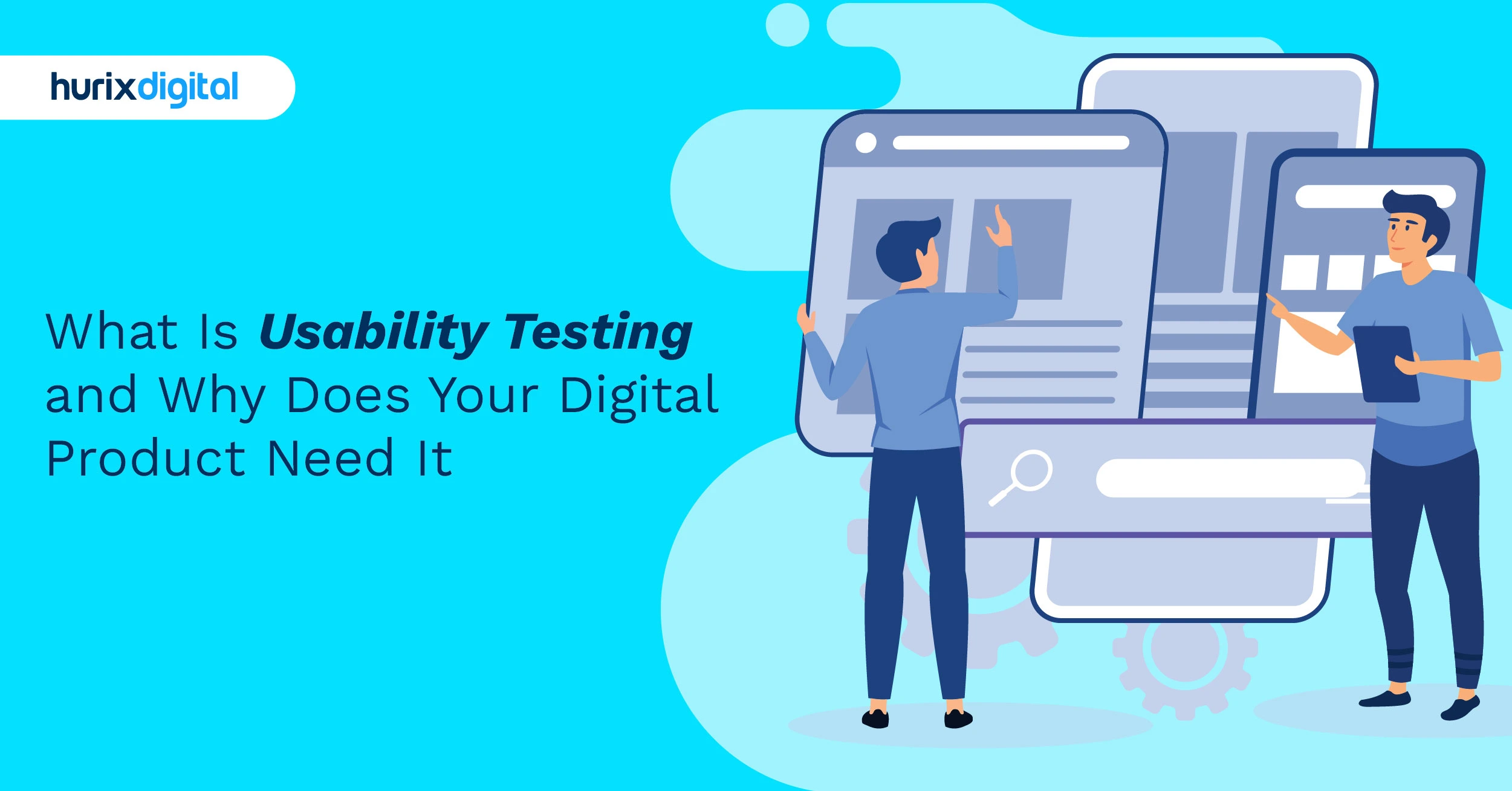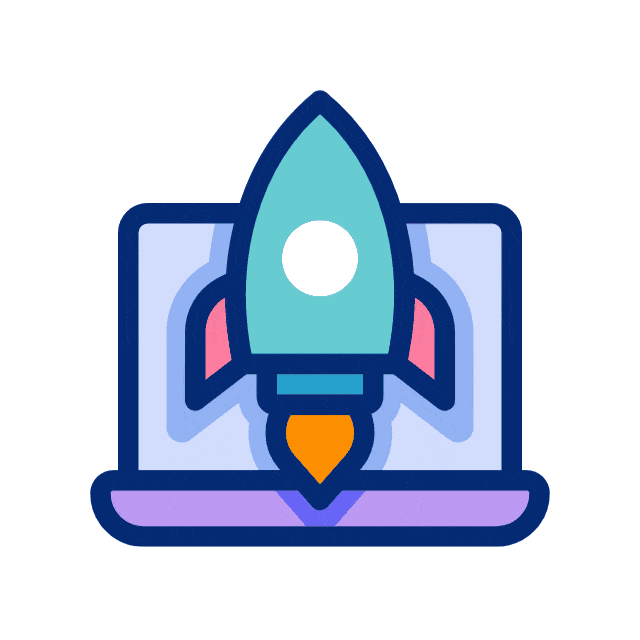
What Is Usability Testing and Why Does Your Digital Product Need It
Have you ever used an app or website that seemed to be tailored specifically for you and was easy to use? A key element of great user experience (UX) design is thorough usability testing, which is what makes for that kind of smooth interaction.
Usability testing is crucial since user expectations are higher than ever today. Testing guarantees that your product, whether it be eLearning platforms, workplace software, or mobile apps, not only functions but also does so effectively.
This article offers practical, doable tactics and best practices to assist you in creating products that consumers will adore and trust, regardless of how experienced you are.
Table of Contents:
- Introduction to Usability Testing
- Elements of Usability Testing
- Benefits of a User-Centered Design
- Benefits of Usability Testing
- How to Plan Your UX Research and Testing
- Key Usability Testing Strategies to Explore
- Step-by-Step Usability Testing Process
- Usability Testing Settings and Costs
- Wrapping Up
Introduction to Usability Testing
Usability testing is a methodology in which the usability of a website or application is evaluated through various methods. The product is evaluated by testing it with representative users who exercise the product and think aloud about their experience using it, while an evaluator observes the users and records their feedback. Based on this, the evaluator identifies usability problems and assesses the user experience.
At its core, usability testing involves determining whether the product functions as intended by observing the user with it or performing specific tasks. Its primary purpose is to discover any potential usability issues in the product that prevent users from achieving the task in the intended manner. These considerations help make the product user-friendly and intuitive.
Understanding usability testing is the first stage to creating products with easy user experiences.
Why is Usability Testing Crucial for UX?
Effective usability testing provides several critical advantages that transform good products into exceptional user experiences.
- Uncovers Usability Issues: It identifies problems that users might face before the product reaches a wider audience.
- Enhances User Flow: It helps make navigation smoother and more intuitive by revealing friction points in the user journey.
- Saves Time and Costs: Early problem identification reduces the need for expensive repairs after launching products.
- Increases User Satisfaction: A better user experience boosts audience participation and loyalty, leading to higher retention rates.
- Validates Design Decisions: Testing provides concrete evidence about what works and what doesn’t, removing guesswork from the design process.
Elements of Usability Testing
The design of the product needs to be interactive, attractive, and practical for the user to be able to use it. In usability testing functions one gets to monitor users interacting with the product, and this can provide insights into the errors of the product.
The three core elements of usability testing are:
1. The Participants
The participants need to provide a close, realistic interpretation of the end user of the product. They should provide feedback about every question and task offered to them. Selecting the right participants is crucial because they represent your actual user base, and their experiences will directly inform your design improvements.
Participants should:
- Match your target demographic
- Have relevant experience or characteristics
- Be willing to provide honest, detailed feedback
- Feel comfortable thinking aloud during testing sessions
2. The Task
The tasks would be mostly real-life activities that the participant might perform in the presence of the product. These tasks should be:
- Realistic and relevant to actual use cases
- Clearly defined but not overly prescriptive
- Appropriate for the testing goals
- Representative of key user journeys
3. The Facilitator
The facilitator serves as a guide for the participant and provides the answers and instructions, and solves the problem of the participant while asking to follow up with questions. The primary role of the facilitator in the usability test is to ensure proper, high-quality, valid data without influencing or compromising the participants’ behavior.
A skilled facilitator:
- Creates a comfortable, non-judgmental environment
- Asks open-ended questions
- Remains neutral and doesn’t lead participants
- Takes detailed observations and notes
The main goal of usability testing is to understand how users might interact with the website or app and make modifications according to the results.
Benefits of a User-Centered Design
User-centered design (UCD) focuses on the user’s needs, behavior, and goals during the design process. It prioritizes user feedback to ensure the final product solves real problems and meets expectations.
The following are the main advantages of using a user-centered design approach:
- Relevance: Create goods that address real-world issues and users’ realistic demands. You can develop solutions that connect with users and improve their daily lives by learning about their problems.
- Simplicity: Create clear, simple, and easy-to-use designs to reduce misunderstandings. Thanks to simple designs that lower the learning curve, users can accomplish their objectives more rapidly and effectively.
- Accessibility: Designing inclusively to accommodate users of all abilities, including those with disabilities, is known as accessibility. Accessible products broaden your customer base, enhance usability for all users, and adhere to legal accessibility requirements.
- Trust: Build dependable and user-friendly goods to inspire confidence in users. A flawless experience fosters customer loyalty by enticing customers to come back and refer others to your product.
Benefits of Usability Testing
Usability testing enables the designers and developers to identify problems before they are coded. This proactive approach delivers significant business value and measurable returns on investment.
During a usability test, you will:
- Know if users can complete specific tasks successfully: This validates whether your design supports user goals effectively.
- Identify how long it takes to complete specific tasks: Time-on-task metrics reveal efficiency issues and opportunities for streamlining.
- Learn how satisfied users are with the website or other product: Satisfaction scores provide insights into overall user experience quality.
- Identify possible changes required to improve user performance and satisfaction: Testing reveals concrete, actionable improvements rather than subjective opinions.
- Analyze if the user performance meets the usability objectives: Comparing results against benchmarks helps track progress over time.
A solid test plan, recruitment of participants, and analysis and reporting of the findings are all required to effectively run a usability test.
How to Plan Your UX Research and Testing
Planning is the foundation of effective UX research and testing. A well-thought-out plan ensures your efforts are targeted, efficient, and impactful.
Here’s how to get started:
Defining Goals and Scope
Outline your research objectives, such as understanding user needs or identifying usability issues. Be specific and prioritize your goals to ensure you focus on the most critical aspects. Do the following:
- Set Clear Objectives: Know what you want to achieve through usability testing (for example, testing navigation flow or task completion). Without clear objectives, testing efforts become unfocused and results become difficult to interpret or act upon.
- Determine Success Metrics: Acknowledge fundamental performance indicators, such as task completion time, error rates, and user satisfaction. These metrics should align directly with your testing objectives and business goals.
- Keep the Coverage Focused: Test only the most required features to avoid users getting overwhelmed with testing. Prioritize high-impact areas or features that are critical to user success.
Setting clear goals and limiting the scope ensures that your usability testing efforts remain focused and efficient. It also makes it easier to communicate findings and justify design decisions to stakeholders.
Selecting the Right Participants
Choosing who will participate in your usability test is one of the most critical steps in the entire process. Carefully selecting participants ensures that the feedback you gather is meaningful, actionable, and truly reflective of the needs, behaviors, and challenges faced by your target audience. Here are some essential guidelines to keep in mind when recruiting participants for usability testing:
- Identify Your Target Audience: Use demographic data to choose participants to match the target users of your product. Consider factors like age, technical proficiency, domain knowledge, and usage frequency.
- Recruit Diverse Participants: Include users with different backgrounds to get varied insights. Diversity in your participant pool helps ensure your product works well for a broad range of users, not just a narrow segment.
- Screen Participants: Ensure they have the characteristics or behaviors you want to study. Screening questions help filter out participants who wouldn’t represent your actual user base.
Choosing the right participants is key to gaining insights that will directly inform the improvements you make to your design. The quality of your participants directly impacts the quality of your findings.
Key Usability Testing Strategies to Explore
Here are the top strategies that can elevate the effectiveness of your usability testing:
1. A/B Testing
Compare two versions of a feature or design to see which performs better. It involves testing different colors, layouts, or wording on a button. You can make design choices by testing clicks, conversions, or engagement that truthfully reflect what users want instead of just guessing.
A/B testing helps you use data to make decisions that improve your product’s success and appeal.
2. Moderated vs. Unmoderated Testing
- Moderated Testing: Using this, a researcher is with the user during the test to guide them and pose follow-up questions. It allows real-time insights.
- Unmoderated Testing: Users complete tasks independently, often through online platforms. It is affordable and lets you include more participants.
The selection between moderated and unmoderated testing depends on your goals and resources.
3. Quantitative and Qualitative Testing
- Quantitative Testing: Quantitative testing looks at measurable data, like how long a task takes or how many users complete or fail an action. It provides data that can highlight patterns or areas of concern.
- Qualitative Testing: Qualitative testing involves gathering non-numerical data like user feelings, thoughts, and comments. For example, asking users to describe their experience while navigating through a feature can give deeper insights into why they may struggle with it, even if the task completion rate looks fine.
4. Surveys
Surveys are a popular method for gathering usability feedback. They involve using questionnaires with a variety of question formats to collect valuable insights from users.
This approach is scalable, making it possible to gather data from a large number of participants, which helps developers perform thorough analyses and identify trends.
5. User Personas
Developing fictitious profiles that embody the objectives, actions, and dispositions of an ideal user is known as user persona creation.
This approach helps ensure that development and design meet users’ requirements and expectations. By examining the elements that affect users’ experiences, developers can better adapt the product to users’ demands.
Step-by-Step Usability Testing Process
Here’s a clear, structured approach to conducting effective usability testing:
1. Preparing for Usability Tests
- Develop Test Scenarios: Write realistic tasks for users that align with their goals.
- Choose the Right Tools: Use appropriate platforms for conducting the tests, whether moderated or unmoderated.
- Prepare a Test Script: Outline tasks and follow-up questions to guide the session consistently.
Proper preparation will ensure the test runs efficiently, allowing you to gather valuable insights without unnecessary delays.
2. Conducting the Tests
- Set a Comfortable Environment: Make users feel at ease so they act naturally.
- Encourage Thinking Aloud: Ask users to explain their thoughts as they complete tasks.
- Observe and Take Notes: Watch users closely to spot areas where they struggle.
You can encounter usability issues that are not immediately apparent by observing and listening to participants.
3. Analyzing and Acting on Feedback
- Reconsider the Findings: Evaluate quantitative and qualitative data to recognize the most common problems.
- Prioritize Usability Problems: Focus on issues that influence the most users or have the highest severity.
- Iterate on Designs: Implement improvements and run additional tests if necessary.
Usability Testing Settings and Costs
Effective usability testing does not require a formal usability lab, as it can be done in any of these settings:
Testing Environments
- Fixed laboratory with two or three connected rooms outfitted with audio-visual equipment: This traditional setup allows for observation rooms where stakeholders can watch tests without disturbing participants.
- A room with portable recording equipment: This flexible option works well for organizations that need to test in different locations or want to observe users in their natural environment.
- A room with no recording equipment, if someone is observing the user and taking notes: While less sophisticated, this approach can still yield valuable insights when resources are limited.
- Remotely, with the user in a different location (moderated or unmoderated): Remote testing has become increasingly popular, offering geographic flexibility and access to diverse participant pools.
Understanding Testing Costs
Your testing costs depend on the:
- Type of testing performed: Remote unmoderated tests are typically less expensive than in-person moderated sessions.
- Size of the team for testing: More team members involved means higher labor costs.
- Number of participants for testing: While 5-8 participants often suffice for discovering major issues, larger samples may be needed for quantitative studies.
- Number of days you will be testing: Extended testing periods increase costs but may be necessary for complex products.
Budgeting for more than one usability test is necessary. Building usability into any product is an iterative process. Some of the elements that need to be considered when budgeting for usability testing are:
- Time: Time is essential to plan a usability test. Both the usability specialist and the team would need time to become familiar with the site and pilot test the test scenarios.
- Recruiting Costs: Either allow staff time to recruit or engage a recruiting firm to schedule participants.
- Participant Compensation: If participants are to be compensated for their time or travel, then that has to be included in the budget.
- Rental Costs: If you are renting recording, monitoring equipment, or a conference room, it accounts for the rental costs.
Wrapping Up
Usability testing is key to creating products that are simple and enjoyable to use. Testing early often helps catch problems before they become costly and improves the user experience. Understand your users, gather feedback, and refine your design for a smooth, intuitive experience.
Usability is not merely an obligatory step in the project schedule. There should be clarity as to why the testing is being conducted, and the results should be implemented. The most successful products result from organizations that embrace usability testing as an ongoing practice rather than a one-time event.
So, whether you’re working on mobile apps, websites, software platforms, or ePublishing projects, usability testing provides the insights needed to create exceptional user experiences that drive business success.
If you’re ready to leap into product improvement, Hurix Digital can help. With our expertise in usability testing and UX design, we can guide you through the process of creating a product that users love. Feel free to reach out to us today and take the first step toward seamless user experiences!

Vice President – Content Transformation at HurixDigital, based in Chennai. With nearly 20 years in digital content, he leads large-scale transformation and accessibility initiatives. A frequent presenter (e.g., London Book Fair 2025), Gokulnath drives AI-powered publishing solutions and inclusive content strategies for global clients
 Upcoming Masterclass | Build an Army of Brand Evangelists using Training & Development | November 20th, 8:30 AM PDT | 11:30 AM EDT | 10:00 PM IST
Upcoming Masterclass | Build an Army of Brand Evangelists using Training & Development | November 20th, 8:30 AM PDT | 11:30 AM EDT | 10:00 PM IST

